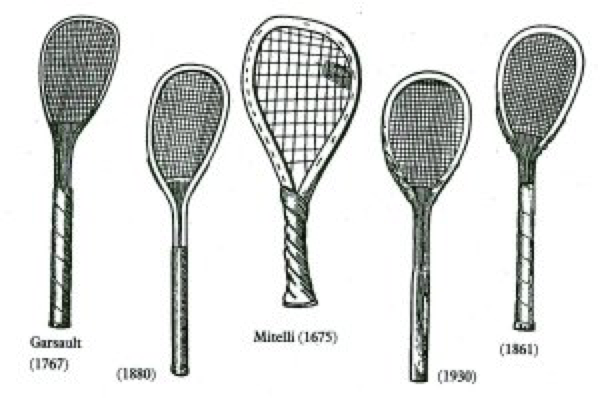The History of Tennis Rackets

M. de Garsault, an early authority on the game, gives a detailed description in 1767 of how a racket was made. Specially selected ash rods were boiled to make them flexible and then bent in half, so that the resulting loop became the embryo racket-head and the long ends, bound together became the handle. A seventeen-inch-long centre piece of soft wood was inserted between these ends and strengthened with the fibre of tendons taken from between the hock and hind hoof of an ox, and glued over with parchment. A tilt was then imparted to the head of the racket making it "pear shaped" with the aid of a special clamp, and it is this weighting of the head of the racket that helps a player apply the cut stroke more effectively.
The effect of a cut shot is to make the ball "die" when it bounces off the back wall. A lawn tennis player's top spin shot is not ideal in real tennis as the ball sits up after hitting the back wall and gives the opponent more time to get into position and play a decisive shot.
The racket frame was pierced with holes and strung with sheep gut, vertically and horizontally. Nowadays, the racket strings are made of synthetic material and handles and frames are reinforced with a plastic coating. Attempts were made in the 1990's to introduce metal rackets but these were banned, mainly for fear of the damage they might cause to court floors and walls.
Rackets have been made for many years by Grays of Cambridge. There are four types:- junior, standard and the reinforced semi-tec and extra-tec.


